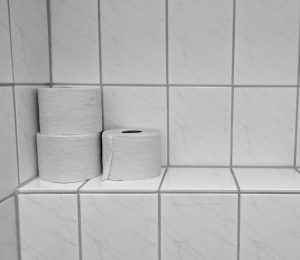Learn how best to tile around doors, windows, light fittings and other awkward areas. With all the correct tools, and a little bit of patience, tiling flat walls is a fairly simple job.
Tiling around doors, windows and awkward areas can, however, be tricky if not planned and done correctly.
The most important thing to take into consideration when tiling these awkward areas is cutting the tiles.
Make sure you have a good quality Tile Cutter and Tile Saw before you start. It is also worth buying a tile Template Former or Profile Gauge.
Tiling Around Door Frames
If the door is in the middle of a wall, it is a good idea to use whole tiles around the door and then work out from it, so you keep any cut tiles at the corners of the room.
Doors, when in the middle of a wall, tend to be a focal point of a room (as do windows, but more on that in a moment), and having differently sized tiles around the frame will look strange.
Remember that the door frame may not be exactly vertical, check that it is before assuming it is a straight edge to tile against.
Tiling Around Windows
 As with doors, large windows tend to be a focal point of a room, so it makes sense to use them as the centre point of your tiling. Mark the centre point of the window (above or below the frame) and tile out from either side of this line. The tiling of the whole of a window wall should centre on the middle of the window.
As with doors, large windows tend to be a focal point of a room, so it makes sense to use them as the centre point of your tiling. Mark the centre point of the window (above or below the frame) and tile out from either side of this line. The tiling of the whole of a window wall should centre on the middle of the window.
Tile all the way up to the edge of the window reveal, all the way around the window (if required). You can cut L-shaped tiles for the corners by marking the tile with a chinagraph pencil and then cutting out the waste with a tile saw.
If you need to cut the tiles at the edge of the reveal, cut them flush with the edge. The tiles that are laid in the recess should overhang the wall tiles by the depth of a tile (to give a nice, neat finish).
When laying the tiles in the recess, start with the sill first (if there is no wooden sill). Make sure the tiles line up with the ones on the wall so there is a continuous joint.
Tile the vertical sides of the recess next, and then the top of the recess last. You will need to make a temporary prop out of two pieces of wood to hold the top tiles in position while the adhesive sets (one piece of wood flat against the top tiles, and the other propped into the bottom of the recess to hold it in place).
Tiling Around Hand Basins
Try to use a row of whole tiles above the hand basin, as cut tiles will look untidy. Take into account any accessory tiles (tiles with soap dishes, etc, formed into them).
If you have a Tile Saw and a Profile Gauge it is well worth shaping the tiles to fit the curve of the basin. This can take time and patience, but the result should be much better.
Tiling Around Light Fittings
For the best finish, turn off the power at the mains and remove the face plate of the switch. Tile right up to the edge of the mounting box so that the face plate will cover any cut edges when it is replaced.
You can buy low-profile light fittings which will not stand out so much from the wall when screwed against the tiles.







